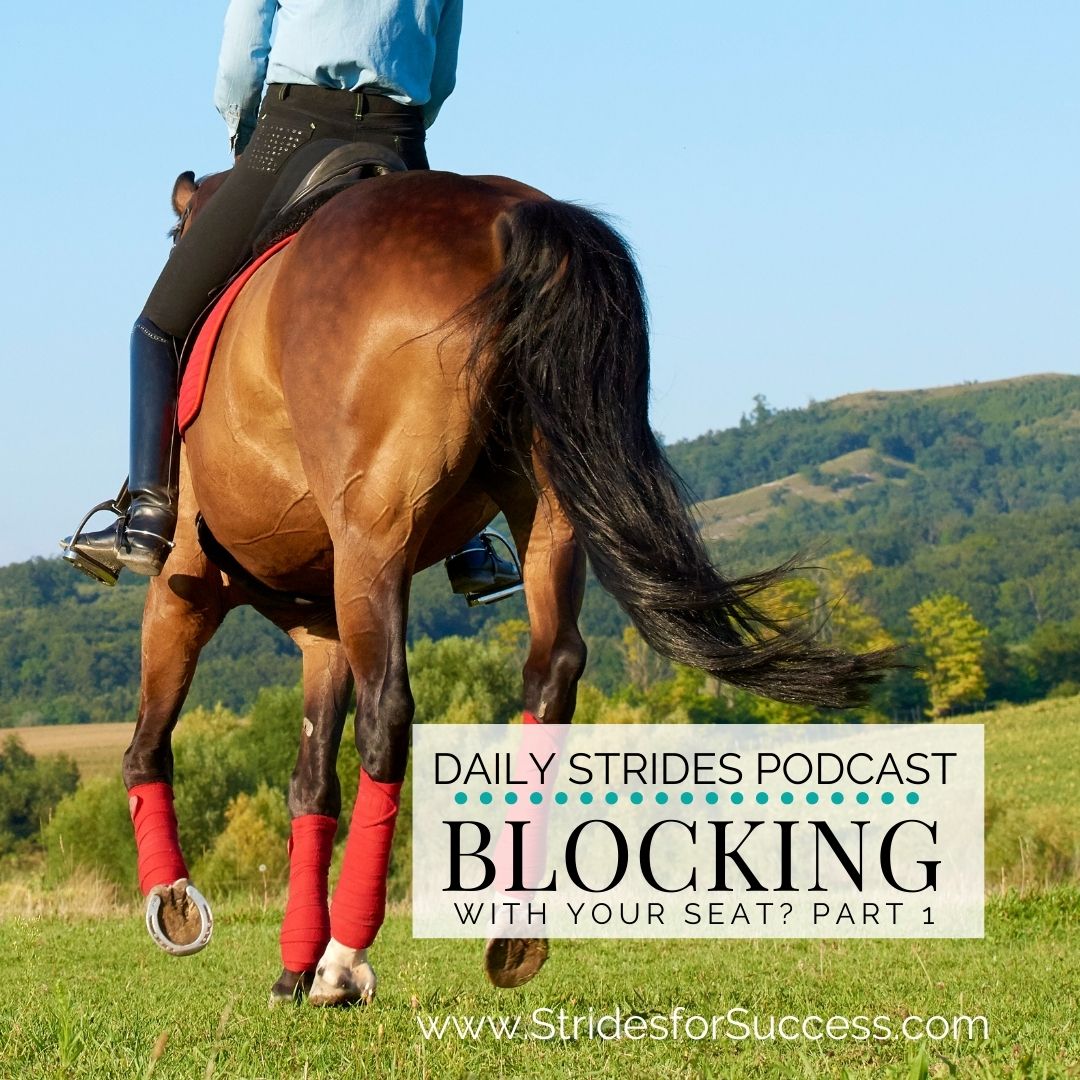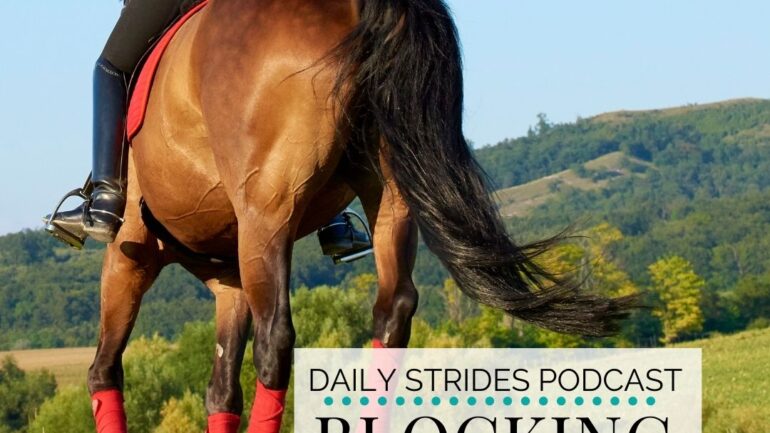So you say go. But immediately follow it up with whoa. And all because you’re blocking with your seat. It’s like trying to drive a car with the handbrake on! And you continue to blame the car for not going forward…
For many riders, the even more frustrating part of it is that it can be hard to notice. If you are blocking with your seat, you probably don’t even realize you’re doing it. I have 2 exercises for you to ride that will help you feel if you are indeed blocking with your seat or not…

But before you begin riding, I first want to make sure we are on the same page with regards to your seat…
Understanding Your Seat
There are basically 3 basic ways your seat can be used to influence your horse. Go, whoa, and neutral. Driving, resisting, and allowing. It is the ‘allowing’ part that so many riders struggle with. Go or driving is when you use your seat to ask for forward or more. Resistance is how you ask your horse to steady, slow down or stop using your seat
Allowing is the equivalent of telling your horse to ‘carry on’. It means that the energy can move underneath you, through your horse’s body, on its path from the backend to the frontend.
Obviously there are numerous ways each of these three principles can be used, and communicated, in your riding. It all comes down to your hips and your core. The angle of your hips, coupled with your use of core strength will determine how your horse experiences your seat.
Blocking with Your Seat
The trouble begins when you want to allow, and say ‘yes’, but due to either incorrect position or lack of suppleness, you actually block and say no.
Blocking with your seat stops you from giving basic confirmation to your horse that, yes, he correctly understood your aids and is now doing what you want him to do.
And, blocking with your seat even also takes this one step further. It tells your horse to stop doing this thing. Because blocking works like resistance. If you mean to go, but you say stop… The confusion is real 😉
Fix Your Position Before You Begin
Many riders think of their seat as only being their seat bones. I believe that, as a rider, your seat is everything between your belly button and about a third of the way down your thighs.
So, that being said, your seat will only work as well as you position it to. Begin all of these exercises by first correcting your position. Think of your two lines; head, shoulder, hip, heel and elbow, wrist, rein, mouth. Ensure that you are indeed correctly sitting on your seat bones.
When in the saddle, it should feel like standing, not sitting. This will engage your core, which will result in you carrying your upper body.
Keep in mind that many riders do not position their seat (hips) correctly when they are in the saddle. They either sit like ducks in the saddle (overly arched lower back leading to closed hips) or like the letter C (rounded back and sitting on the back of their seat, rather than on their seat bones).
Sit on your seat in a way that would position it if you were standing, erect and engaged, on the ground beside your horse.
Practice, Practice, Practice
At the beginning of this post, I mentioned 2 exercises to help you identify and then begin improving your allowing seat in your riding. These exercises will be available in next week’s episode of the Daily Strides Podcast.
And in the meantime, work on improving and strengthening your position in the saddle and check out some of the previous episodes that relate to this topic below
Happy Riding
Lorna
Additional Resources on This Topic
-
-
- Learn to Stop Driving with Your Seat
- Connection in Your Riding; Seat and Legs
- Your Independent Seat is a Result of Your Independent Aids
- Your Independent Seat is Everything in Your Riding
- Improving Your Feel in the Saddle
- DEVELOP YOUR AIDS THROUGH LUNGING – UPCOMING FREE ONLINE LIVE TRAINING
- Online coaching and audio horse riding lessons for equestrians
- Groundwork for Riding
- Online community for equestrians working on their mindset & fitness
- Online Community for equestrians focusing on re-schooling horses (and ex-racehorses)
- The Daily Strides Podcast on iTunes
- The Daily Strides Podcast on Stitcher Radio
-

